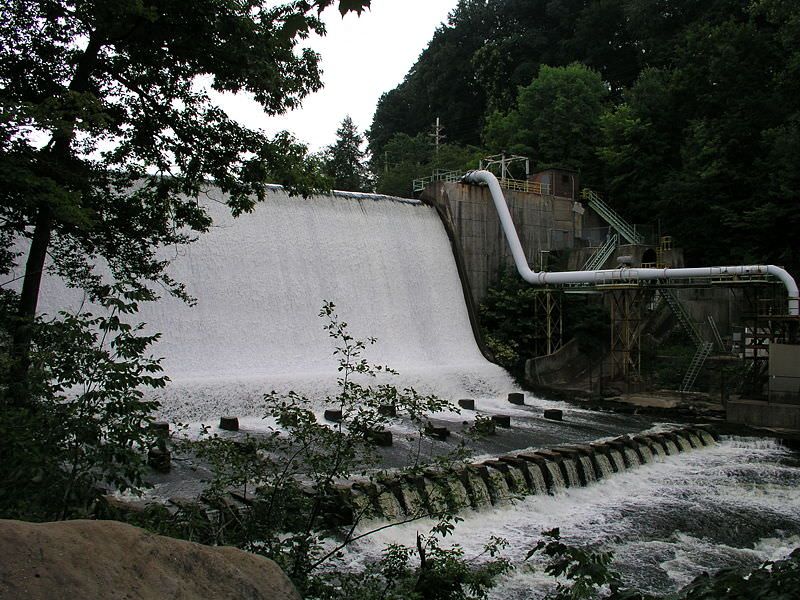Dam Removal Case Study
Published on by Water Network Research, Official research team of The Water Network in Government
Officials will soon be one step closer to potential removal of the Gorge Dam, which crosses the Cuyahoga River in the Gorge Metro Park on the border of Akron and Cuyahoga Falls.
By Jennifer Conn
A new hydrological study is underway to determine what, if any, affects the removal could have on structures upstream of the Cuyahoga River, such as bridges and properties, said Summit Metro Parks Chief of Conservation Mike Johnson.

Ohio Edison dam, Source: Wikimedia Commons, Labeled for Reuse
The cost of the $70,000 study by Netherlands-based Arcadis Design and Consultancy will be equally shared by Summit Metro Parks and FirstEnergy, the project's major stakeholders. Other stakeholders include the Ohio EPA, the City of Akron and the City of Cuyahoga Falls.
A public meeting to discuss the study, the ecosystem of Gorge Metro Park and other aspects of the project is scheduled for Thursday, March 22, at North High School, 985 Gorge Blvd. in North Hill. A reception will begin at 6 p.m. followed by the presentation from 6:30-8:30 p.m.
Officials say removal of the 420-foot-wide, 60-foot-tall dam Gorge Dam, which has served no purpose since the early 1990s, would greatly improve the river's water quality, and draw tourism to the region.
The dam creates a nearly 1.5-mile-long pool of water that:
- Turns the Cuyahoga River into a lake, drastically changing its chemistry
- Obstructs the flow of the river, inhibiting the river's natural ability to clean itself
- Enables accumulation of algae in the dam pool, which reduces oxygen and potentially kills fish
- Acts as a barrier to migratory fish, which locally include suckers (clean-water indicators) and seven species of noninvasive native lampreys, which are endangered and pose no threat.
Read full article: Cleveland.com
Media
Taxonomy
- River Studies
- River Engineering
- Infrastructure
- Dams
- Hydrology
- River Engineering